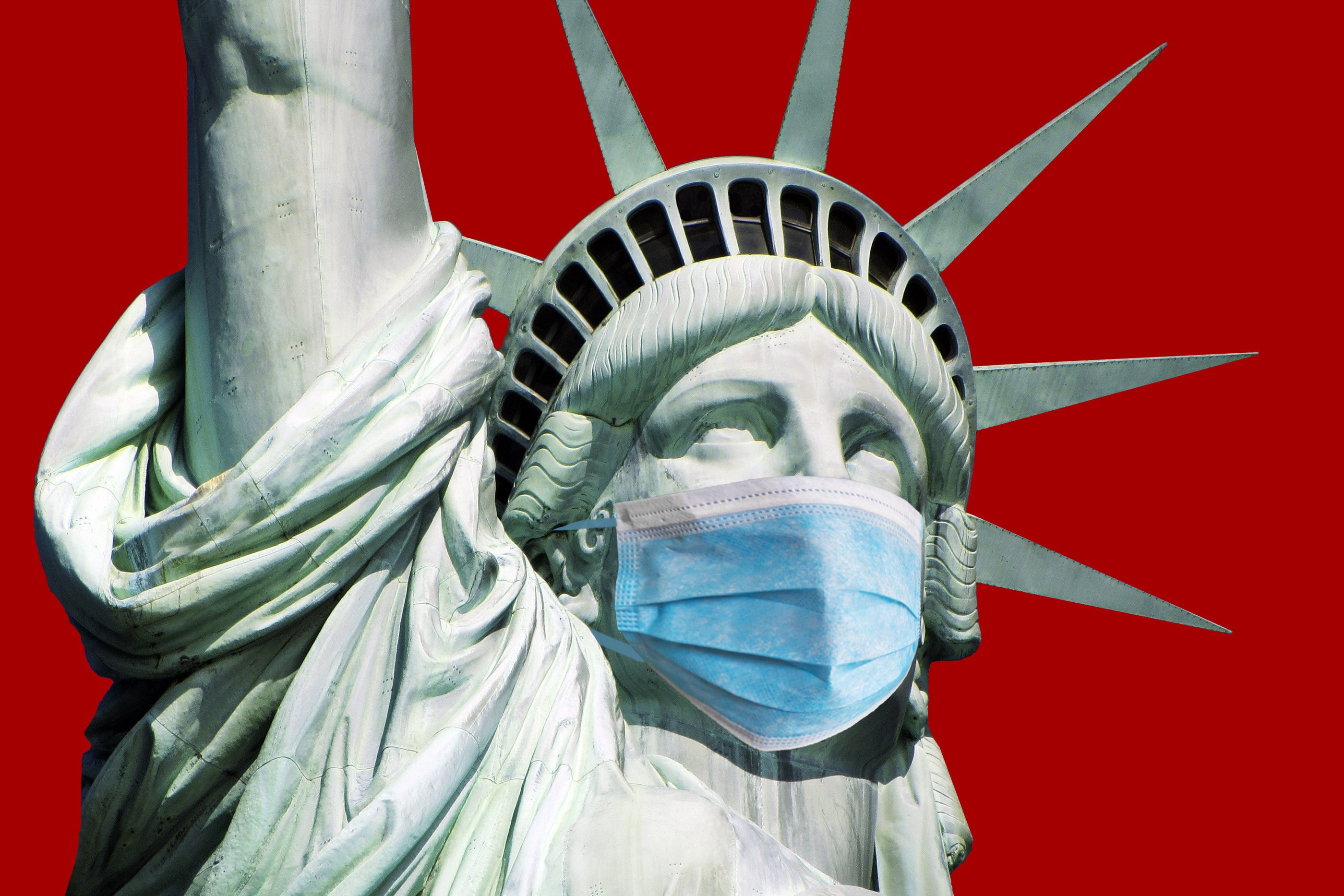New York has been crushed by COVID-19. Will other US cities be spared?
Some states like Florida and Louisiana could be next.

As the number of coronavirus cases in New York City continues to skyrocket, the city's health care system is overwhelmed and seems on the verge of collapse. Other U.S. cities may soon follow, especially if residents don't stay committed to firm mitigation measures.
Since mid-March, New York has had the most U.S. coronavirus cases of any state. As of Friday (April 3), more than 50% of the state's 102,863 COVID-19 cases and about 90% of the state's 2,965 coronavirus-related deaths are in New York City.
New York City's health care system is already overwhelmed, and the state has scrambled to prepare makeshift hospitals in Central Park, at the Javits convention center and onboard a U.S. Navy medical ship. On Thursday (April 2), Gov. Andrew Cuomo announced that the state is projected to run out of lifesaving ventilators in the next six days, The New York Times reported.
Related: Photos: Coronavirus field hospitals across the US
Other metropolitan areas in the U.S. could also experience similar, overwhelming demands on their health care systems, said Krys Johnson, an epidemiologist at Temple University in Pennsylvania.
Cities like New Orleans, Miami and Los Angeles are popular vacation and event destinations, and as such, experience large numbers of visitors from around the world, she said. "All areas with this type of [global] appeal have likely had coronavirus cases for longer than we have been aware and have more cases than we know," Johnson told Live Science in an email.
Areas that were slow to issue stay-at-home orders or to disperse personal protective equipment and health care resources, may end up suffering the worst. "I think states like Florida, Georgia and Mississippi, unfortunately are very likely to have high cases and death rates per capita," Johnson said. The high state-wide numbers are driven by the major cities in the state, where the majority of the population lives.
Sign up for the Live Science daily newsletter now
Get the world’s most fascinating discoveries delivered straight to your inbox.
For instance, as of Friday (April 3), Georgia was reporting 5,831 cases of COVID-19, Florida was reporting 9,585 cases, and Mississippi was reporting 1,358 cases, a 22%, 23%, 16% increase, respectively, over the numbers just two days prior, according to Worldometer, which is tracking cases worldwide.
Florida may wind up being one of the hardest-hit states in the U.S., she said, because of the high proportion of elderly and people with pre-existing conditions. "Researchers have also noted that areas with a higher proportion of minorities, like New Orleans, are among those hardest hit by coronavirus due to a lack of resources and potential discrimination in health care," she said. "This disproportionate burden is likely also occurring in rural communities, where there is a lack of accessible, quality health care."
We can't tell the future, but we can change the present
Models published by the Institute of Health Metrics and Evaluation (IHME) on March 26 show the expected numbers of available health care resources in each state as locations reach their predicted peak case numbers. The model hasn't been peer-reviewed, but it is available as a preprint on medRxiv database.
Related: 13 Coronavirus myths busted by science
The models suggest that some states might be far better off than others in terms of health care capacity to care for COVID-19 patients. Louisiana, for example, may experience a shortage of hospital beds in three days, while Florida might have until the end of May before the state's health care resources are unable to keep up. But there are so many variables to consider in these projections.
The margins of error in the IHME state models are really large, Johnson said. For instance, the peak number of projected deaths per day in Florida during the peak of the state's coronavirus pandemic ranges from 29 to 537.
—Coronavirus in the US: Map & cases
—What are coronavirus symptoms?
—How deadly is the new coronavirus?
—How long does coronavirus last on surfaces?
—Is there a cure for COVID-19?
—How does coronavirus compare with seasonal flu?
—How does the coronavirus spread?
—Can people spread the coronavirus after they recover?
"That is because these projections are affected in a meaningful way by all disease mitigation measures," she said. Factors such as when stay-at-home orders were issued, how broad the orders are, how many businesses and schools are closed, among many others, will ultimately play into how fast the virus spreads and how likely the health care system is to be overwhelmed.
"In the worst-case scenario (orders not in place, people not adhering to orders), we would see hospitalizations and deaths on the upper part of that peak," she said. "In the best-case scenario (proactive orders, enforced social distancing, people adhering to guidelines), we could see hospitalizations and deaths closer to the lower portion of the projected peak."
Keep in mind that "all models are wrong, but some are useful," Johnson said, referring to a common saying in epidemiology.
It may not be too late for mitigation measures to help cities avoid a health-care system collapse, if the measures are taken seriously and strictly adhered to, she said. New Jersey Gov. Phil Murphy has been firm about the state's stay-at-home order that went into effect on March 21. On March 27 the governor reminded residents in a tweet that his order "is NOT a polite suggestion," and it will be strictly enforced.
"If every other state and metropolitan area takes the same dire stance, many cities may be spared the situation that NYC is in," Johnson said. "Our actions every day matter in preventing people from getting the virus and thus reducing the burden on the health care system."
- 20 of the worst epidemics and pandemics in history
- 28 Devastating Infectious Diseases
- The 12 deadliest viruses on Earth
The one-month trial gives you access to all of the educational site's 9,000 activities in reading, science, math and art. Keep your child busy and learning while we are all stuck indoors.

Kimberly has a bachelor's degree in marine biology from Texas A&M University, a master's degree in biology from Southeastern Louisiana University and a graduate certificate in science communication from the University of California, Santa Cruz. She is a former reference editor for Live Science and Space.com. Her work has appeared in Inside Science, News from Science, the San Jose Mercury and others. Her favorite stories include those about animals and obscurities. A Texas native, Kim now lives in a California redwood forest.











